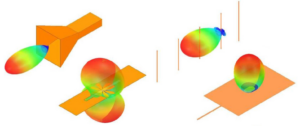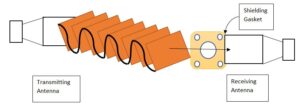When testing and calibrating electronic equipment, a dummy load is used that consumes electrical energy in a way similar to an actual or real expected load of the device under test. It is manufactured with internal resistors, capacitors, or inductors to change electrical energy into heat and other forms of energy. A dummy load is widely used in testing power supplies, amplifiers, batteries, generators, and UPS systems. Special attention should also be paid to good heat dissipation during use, selection of appropriate types and specifications, and regular calibration of test results.
What is a Dummy Load
A dummy load is a stand-in for an electronic device designed to help test and calibrate other devices. It safely and in a controlled manner utilizes electrical energy to mimic real operating loads. Dummy load testing is used to measure the performance indicators of power supplies by consuming electric energy as heat or other forms of internal resistance (resistor), capacitance, and inductors, simulating various wide-load cases.
Working Principle of a Dummy Load
A dummy load works on the principle of conversion, i.e., it converts electrical energy into heat or other forms of energy using internal resistors, capacitors, inductors, etc. Basically, resistive dummy loads are electrical loads that consume electricity through their usage (resistors) and produce heat as current flows through the resistor. If you consume 10 volts across a section of resistance, the resistor will consume power and generate heat.
Capacitive dummy loads take electrical energy through capacitors, storing and releasing energy as they charge and discharge. For example, a 1 microfarad capacitor charged to 100V holds 0.005 joules of energy, which is released upon discharge. This process achieves high-frequency switching, simulating the actual operation of equipment.
Inductive dummy loads use the current through an inductor to create a magnetic field, consuming energy from the electrical circuit via electromagnetic induction. A 10 millihenry inductor carrying 1 amp can store 0.005 joules of magnetic energy. It is not a short-circuit, but rather an open circuit at high frequencies because the inductive reactance increases and helps to “steal” more electrical energy, causing less signal output.

Application Scenarios of a Dummy Load
In electronics, dummy loads are commonly used for the testing and maintenance of electronic equipment. Dummy loads are utilized in power supply testing for simulating different load conditions and testing how a gadget behaves under various situations. For example, when testing a 1000-watt rated computer power supply, a dummy load can be used to slowly add the equivalent load from around 10 watts up and verify that its output voltage is within specified norms (usually ±5%). They can measure the conversion efficiency of power supplies at different loads, e.g., checking if an 800W PSU can reach its peak efficiency (80%) when converting a load of only 500 watts.
Dummy loads are used to mimic the presence of an actual working load in amplifier testing, both for audio and RF amplifiers. Demonstration of power and distortion at various input signals can be measured using dummy loads set to 8 ohms, which is the common loudspeaker impedance standard when testing an audio amplifier rated by the manufacturer. When testing an RF amplifier, the reflection coefficient of the dummy load should be as low as possible to measure accurately. For instance, for a test frequency of 1000 MHz, the RF dummy load should have a reflection loss of less than -20 dB at 50 ohms.
Dummy loads are used as a discharge test in battery testing to simulate the current consumption. For instance, if a 3000 mAh lithium battery needs a discharge test, a dummy load with constant current (around 1 amp) can be used to check voltage trends over the next three hours. This helps understand the real capacity level. Simulated loads can also be used to test the instantaneous discharge performance of batteries, such as applying a 5-amp pulse load for several seconds to check the voltage drop and recovery.
Dummy loads mimic real working environments under different conditions in generator testing. For instance, testing a 5 kW portable generator can use a dummy load to gradually increase the load from 1 kW up to 5 kW and measure changes in voltage and frequency of the generator output under different loads. The overload capacity of generators can also be tested using dummy loads by applying a 6 kW load for a short period and validating if the generator can handle it without risk.
Dummy load conditions are used in UPS power supply testing to simulate an outage situation, ensuring the UPS provides a stable output. For example, when checking a 2 kW-rated UPS unit, a dummy load simulating a 1 kW load can be used to observe the output voltage and battery-backup duration, confirming stability during a power outage.
In solar inverter tests, dummy loads act like the output of a solar panel to test how well an inverter performs under various light situations. For example, when testing a 3 kW solar inverter, the load can be increased from 500 watts gradually up to 3 kW, recording voltage output and conversion efficiency to check for stability across varying levels of irradiance.

Precautions When Using a Dummy Load
Be careful with safety when using a dummy load. Dummy loads generate a lot of heat while operating. A 1000-watt load at full load for 1 hour may produce up to 3600 kJ of heat, so good conditions for dissipation such as fans or heat sinks are necessary to avoid overheating damage and safety issues. The cooling system must dissipate heat at a minimum of 100 W/m² to keep the dummy load from overheating during long-term operation.
Choose the right type and class of dummy load to ensure accurate test results. For instance, when testing high-frequency equipment, use a dummy load with the corresponding response to get accurate test results. The load must exhibit a low reflection coefficient (less than -20 dB) in the 100 MHz to 1 GHz region for RF equipment testing. The wattage of the dummy load used for testing should be 1.2 times higher than that of the device under test to ensure sufficient load capacity.
Check whether the electrical parameters of your dummy load are compatible with the equipment to avoid damage and incorrect readings. For instance, when testing high-voltage power supplies, select a dummy load rated for the appropriate voltage level to avoid electric shock or equipment damage. The rated voltage of the dummy load should be no less than 1.5 times that of the power supply being tested.
Regularly calibrate the dummy load to ensure its performance and parameter accuracy, maintaining the reliability of test results. For instance, calibrating the dummy load every six months ensures the accuracy of its resistance, inductance, or capacitance values, leading to reliable test results. Calibration should include precise measurement of resistance to ensure errors are within ±0.1%, and verification of capacitance tolerance within ±0.5%.
Avoid overloading the dummy load. While many dummy loads can endure short-term overloads, extended use beyond specifications may cause damage. For example, a 500-watt dummy load can handle a 600-watt overload for a short time but should not exceed one minute. Overloads must not exceed 20% of the rated power and should be limited to 1 minute, with a minimum rest time of 5 minutes after the overload to cool down.
Monitor the temperature of the dummy load when operating at high loads for long periods. Use an infrared thermometer or thermocouple to check the surface temperature, ensuring it does not exceed the manufacturer’s maximum operating temperature. A typical maximum operating temperature for most power resistor dummy loads is around 200 degrees Celsius.
Use a well-ventilated test environment when using a dummy load. Install an exhaust system in a closed environment during high-power testing to dissipate the heat generated by the dummy load. A ventilation system should be capable of exchanging air at least five times per hour to stabilize indoor temperatures.







